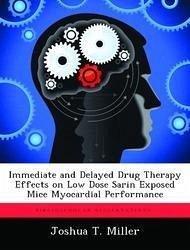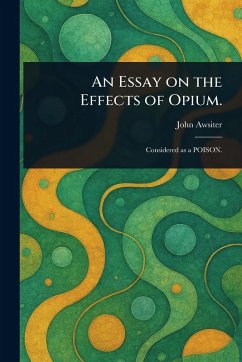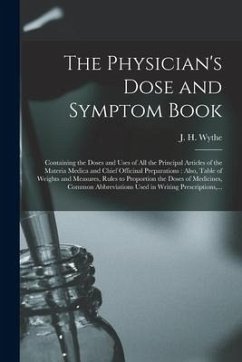
Immediate and Delayed Drug Therapy Effects on Low Dose Sarin Exposed Mice Myocardial Performance
Versandkostenfrei!
Versandfertig in über 4 Wochen
15,99 €
inkl. MwSt.

PAYBACK Punkte
8 °P sammeln!
Recent studies have shown that a single asymptomatic dose exposure to the nerve agent sarin can lead to long term cardiac dysfunction. This study looked at immediate and delayed treatment therapies post exposure on cardiac function. The mice were studied using electrocardiography (QTc, STc, and Tc intervals) and histological techniques (hematoxylin and eosin staining and brain natriuretic peptide (BNP) staining). Male C57BL/6J mice were injected with sarin (0.4LD₅₀) and studied up to 11 weeks. Mice which were given a single dose of the nerve agent treatment atropine/2PAMCL, showed signific...
Recent studies have shown that a single asymptomatic dose exposure to the nerve agent sarin can lead to long term cardiac dysfunction. This study looked at immediate and delayed treatment therapies post exposure on cardiac function. The mice were studied using electrocardiography (QTc, STc, and Tc intervals) and histological techniques (hematoxylin and eosin staining and brain natriuretic peptide (BNP) staining). Male C57BL/6J mice were injected with sarin (0.4LD₅₀) and studied up to 11 weeks. Mice which were given a single dose of the nerve agent treatment atropine/2PAMCL, showed significantly higher cell size and BNP levels than the control (p = 0.001) and increased QTc and Tc intervals, all of which are indicators of cardiac insult . Mice which received drug treatments after the onset of cardiac remodeling showed increased (thus worsening) normalized heart size for isoproterenol (β agonist) treated mice (p = 0.0018) versus saline treated mice along with inverted T-waves pre cardiac stressing. Propranolol (β blocker) treated mice showed only T-wave depression and no difference in normalized heart size versus the saline group. These results suggest that standard treatment methods for nerve agent exposure are not effective in preventing long term cardiac dysfunction and in fact cause them. This work has been selected by scholars as being culturally important, and is part of the knowledge base of civilization as we know it. This work was reproduced from the original artifact, and remains as true to the original work as possible. Therefore, you will see the original copyright references, library stamps (as most of these works have been housed in our most important libraries around the world), and other notations in the work. This work is in the public domain in the United States of America, and possibly other nations. Within the United States, you may freely copy and distribute this work, as no entity (individual or corporate) has a copyright on the body of the work. As a reproduction of a historical artifact, this work may contain missing or blurred pages, poor pictures, errant marks, etc. Scholars believe, and we concur, that this work is important enough to be preserved, reproduced, and made generally available to the public. We appreciate your support of the preservation process, and thank you for being an important part of keeping this knowledge alive and relevant.












